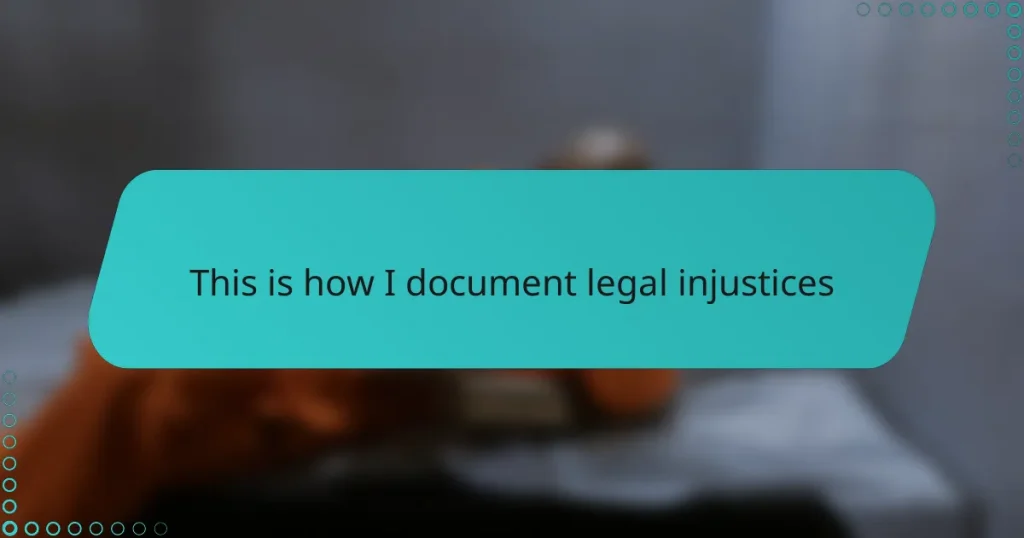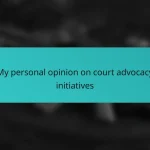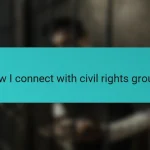Key takeaways
- Legal injustices often stem from biases and unequal representation, highlighting the need for advocacy and accurate documentation of affected individuals’ stories.
- Effective documentation relies on patience, thoroughness, and organization, ensuring that all evidence is collected and presented clearly to support the case.
- Personal involvement in advocacy fosters empathy and accountability, as understanding individual stories can lead to more meaningful changes in the pursuit of justice.
- Recognizing patterns across different cases helps advocates see the broader issues of injustice and motivates persistence in collecting even minor pieces of evidence.
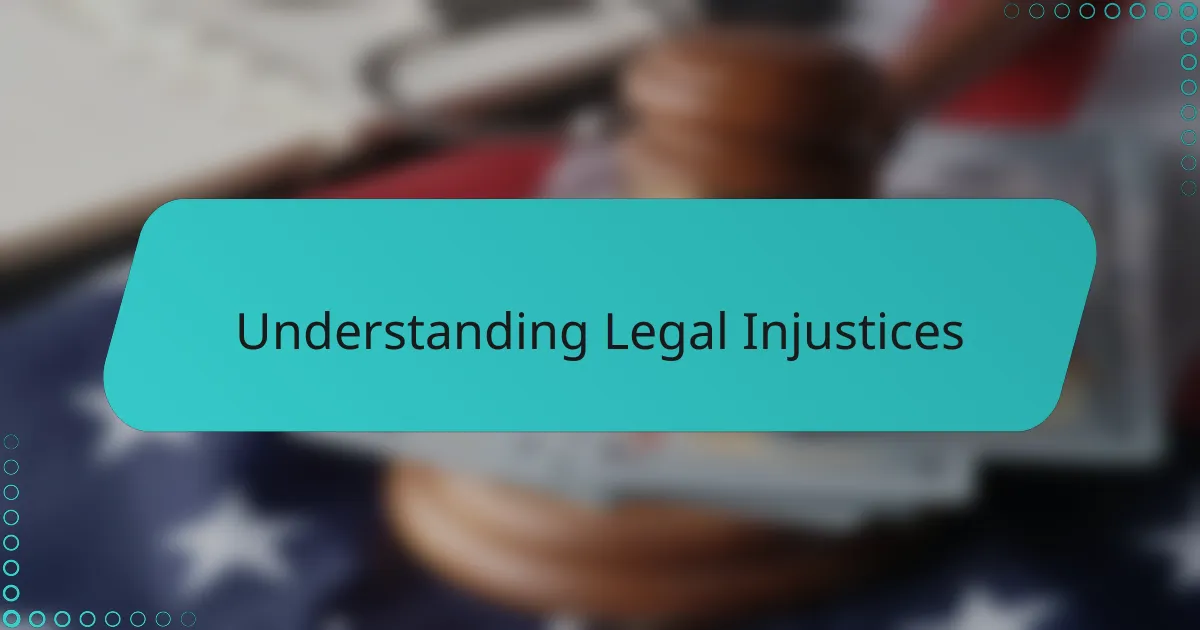
Understanding Legal Injustices
Legal injustices often feel invisible until they hit close to home. I remember witnessing a case where evidence was dismissed not on merit but due to biases against the defendant’s background. It made me question—how many stories like this go unheard every day?
Understanding these injustices means recognizing the patterns that repeat across cases—disparities in representation, unequal application of laws, and silence from those who should protect the vulnerable. Have you ever wondered why some voices carry more weight in a courtroom than others? That imbalance is at the heart of legal injustice.
For me, grasping the depth of legal injustice is more than knowing laws; it’s about feeling the frustration of those wronged and the urgency to document their stories accurately. Without this understanding, how can we hope to advocate effectively or push for meaningful change?
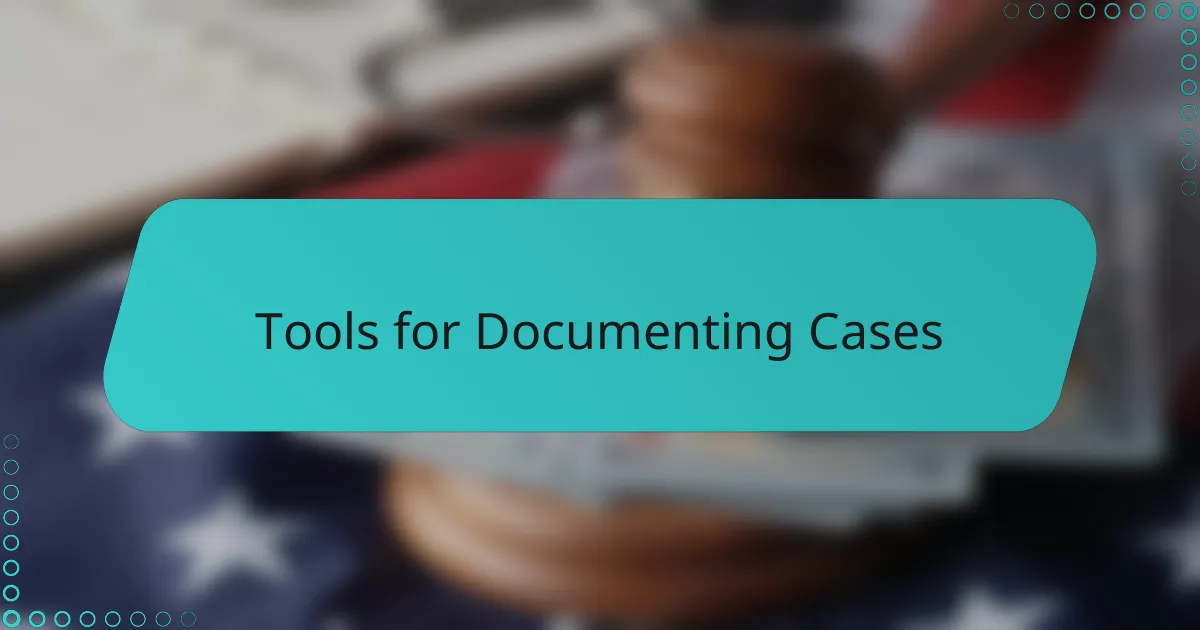
Tools for Documenting Cases
When I first started documenting cases, I relied heavily on simple tools like notebooks and voice recorders. These might sound basic, but they allowed me to capture raw, unfiltered accounts straight from those affected—something I found indispensable when written statements fell short. Have you ever noticed how powerful a person’s own words can be when the system seems to twist the facts?
Digital tools have since become a game-changer in my work. Using secure apps for note-taking and encrypted messaging helped me protect sensitive information, which is crucial when handling stories that put people at risk. It’s a balance between accessibility and security, and finding the right tools meant I could document details more comprehensively without compromising trust.
I also started incorporating multimedia evidence—photos, videos, even GPS data—to strengthen the cases. These tangible proofs add layers that words alone can’t convey. But it made me think: How often do these visual records challenge official narratives? In my experience, they do more than just tell a story; they speak louder than testimony sometimes.
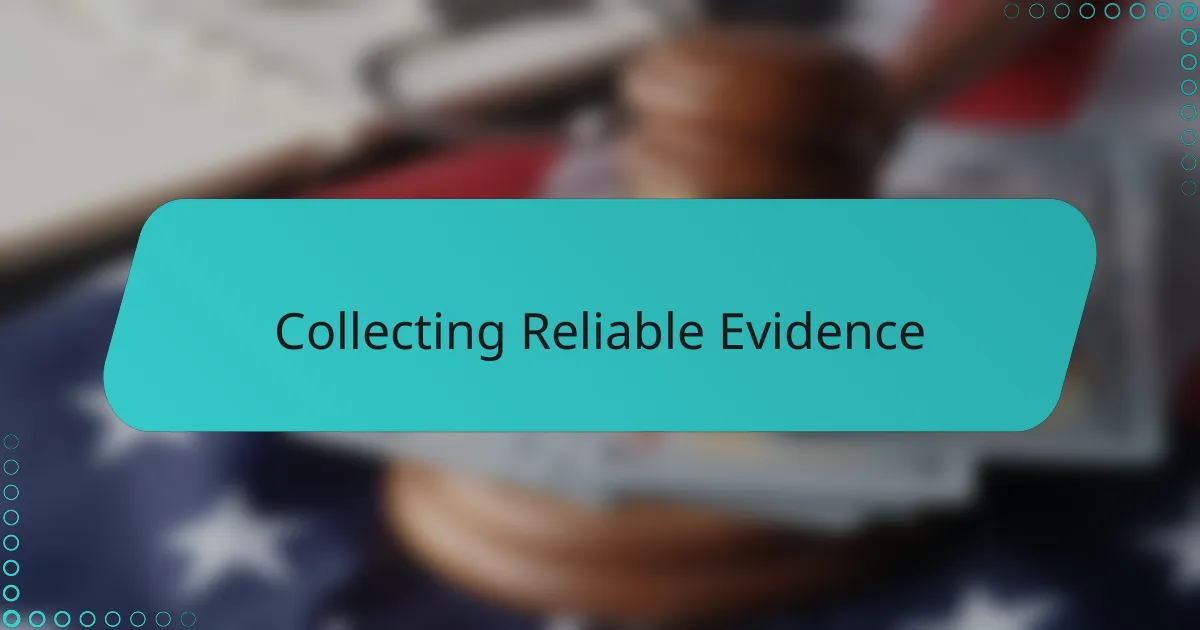
Collecting Reliable Evidence
Collecting reliable evidence is where the entire documentation process truly takes shape. Early on, I learned that haste could ruin a case—missing details or unclear records often meant losing credibility. Have you ever felt the pressure to capture everything perfectly in a high-stakes moment? I certainly have, and it taught me the importance of patience and precision.
One time, I witnessed firsthand how a single overlooked document weakened an otherwise strong case. That experience stuck with me and pushed me to double-check every piece of evidence, from timestamps on photos to verifying sources. It’s a painstaking effort, but in my view, that rigor is what separates hearsay from undeniable proof.
I also make it a point to preserve the context around the evidence, not just the facts themselves. For example, recording the atmosphere or the emotions felt during an interview—small details like these create a fuller picture. Don’t underestimate how much these nuances can sway a judge or a jury when they finally review the case.
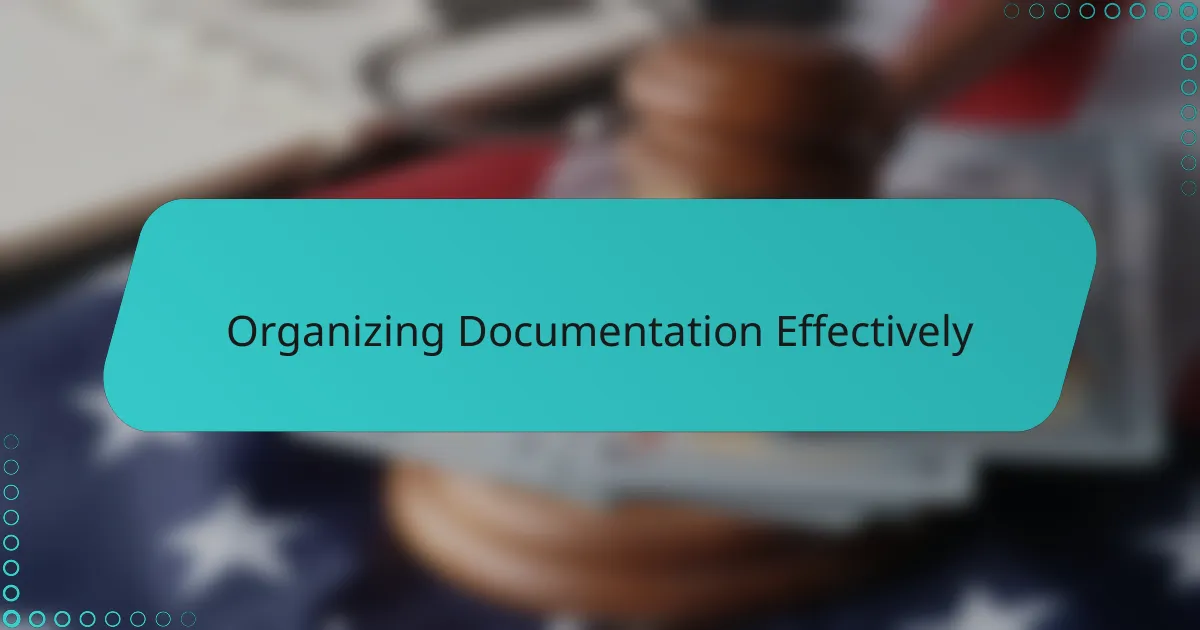
Organizing Documentation Effectively
Organizing documentation effectively transformed my chaotic piles of notes into a clear narrative that could stand up under scrutiny. Have you ever sifted through folders only to realize critical details were buried or misplaced? That frustration was a turning point for me—I began creating a system where every document had its place, tagged by date, type, and relevance.
I learned to use simple spreadsheets and folders meticulously labeled to track each piece of evidence and its source. It might sound tedious, but this structure saved me countless hours and prevented potentially damaging oversights. When everything is easy to find and cross-reference, I feel more confident presenting a coherent, compelling case.
What really made a difference was integrating a timeline—seeing events unfold visually gave me perspective on patterns and contradictions others might miss. Organizing isn’t just about filing; it’s about storytelling. In my experience, how you arrange information can be as persuasive as the facts themselves.
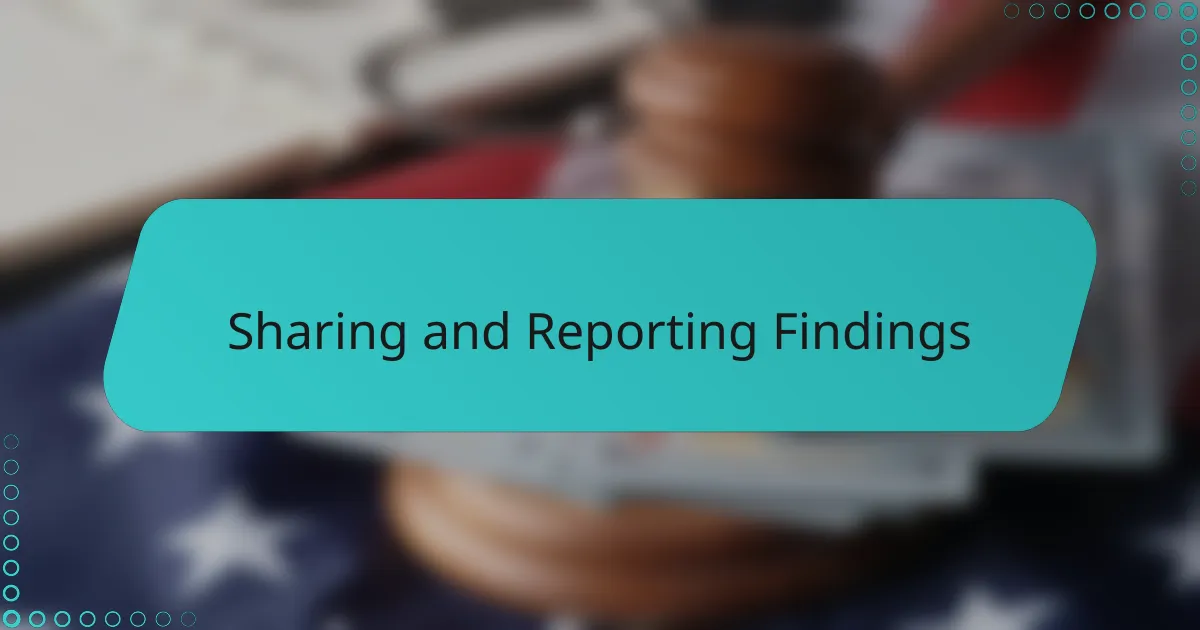
Sharing and Reporting Findings
Sharing and reporting findings is where the documentation truly reaches beyond the pages to make an impact. I recall the moment I compiled a report after months of gathering sensitive testimonies—it felt like the weight of countless unheard voices rested in my hands. Have you ever experienced that mix of fulfillment and responsibility, knowing what you share could spark change but also expose vulnerabilities?
In my practice, choosing how and to whom I share findings is just as important as the content itself. Sensitive information demands careful channels—whether it’s trusted advocacy groups or legal teams—to ensure the story doesn’t get lost or distorted. It’s a delicate balance between transparency and discretion that I’ve learned only with time and experience.
Sometimes, I’ve witnessed firsthand how a well-crafted report sways decision-makers or galvanizes public awareness. Yet, I always remind myself that sharing is just the beginning; following up and supporting those affected is what ultimately holds the promise of justice. Does every report reach its full potential? Not always, but each one is a vital step forward in the fight against legal injustice.
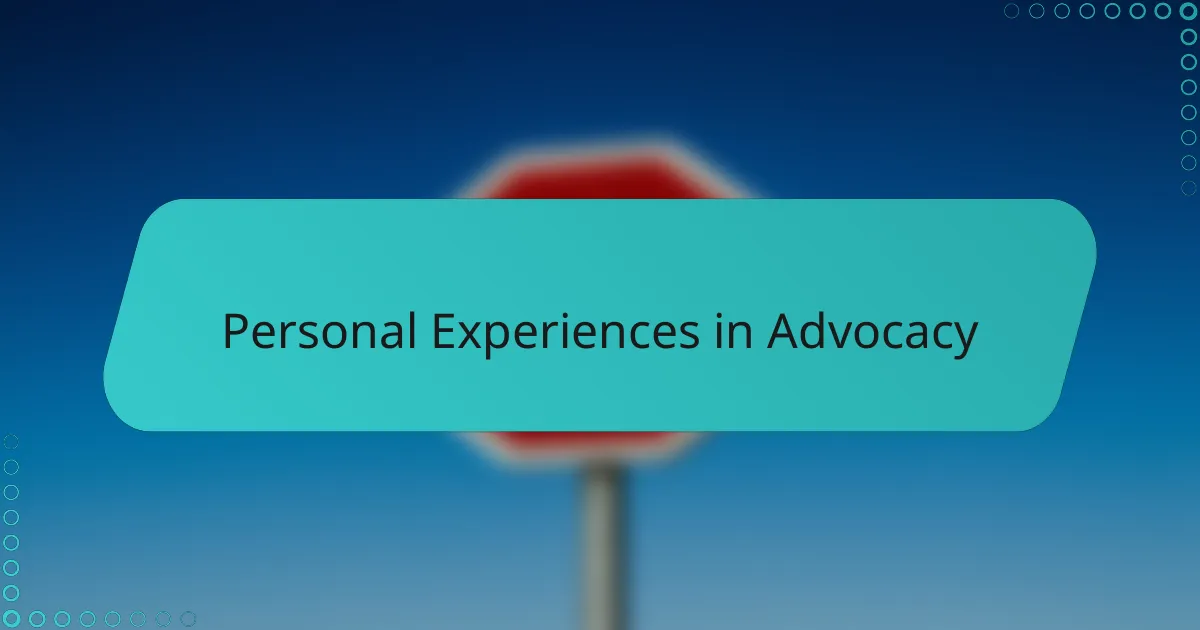
Personal Experiences in Advocacy
There was a moment early in my advocacy work when a client’s story shook me deeply—he had been wrongfully accused because no one bothered to listen or look beyond surface assumptions. That experience made me realize that documenting legal injustices isn’t just about facts; it’s about bearing witness with empathy and determination. Have you ever found yourself feeling both heartbroken and fueled to act after hearing a story that seemed almost unreal? That’s exactly what keeps me going.
I’ve also grappled with moments of doubt, wondering if my documentation truly made a difference or if it simply added to a pile of forgotten reports. Yet, recalling the gratitude from families who saw their realities validated reminds me that each recorded injustice is a small victory in itself. How often do we underestimate the power of simply acknowledging someone’s truth?
What I’ve learned over time is that personal involvement brings a responsibility to remain both compassionate and meticulous. One case that lingered with me involved spending hours with a teenager recounting her ordeal, knowing my notes might be her only voice in a system ready to overlook her. Those encounters shape not only the work but the person behind the advocacy.
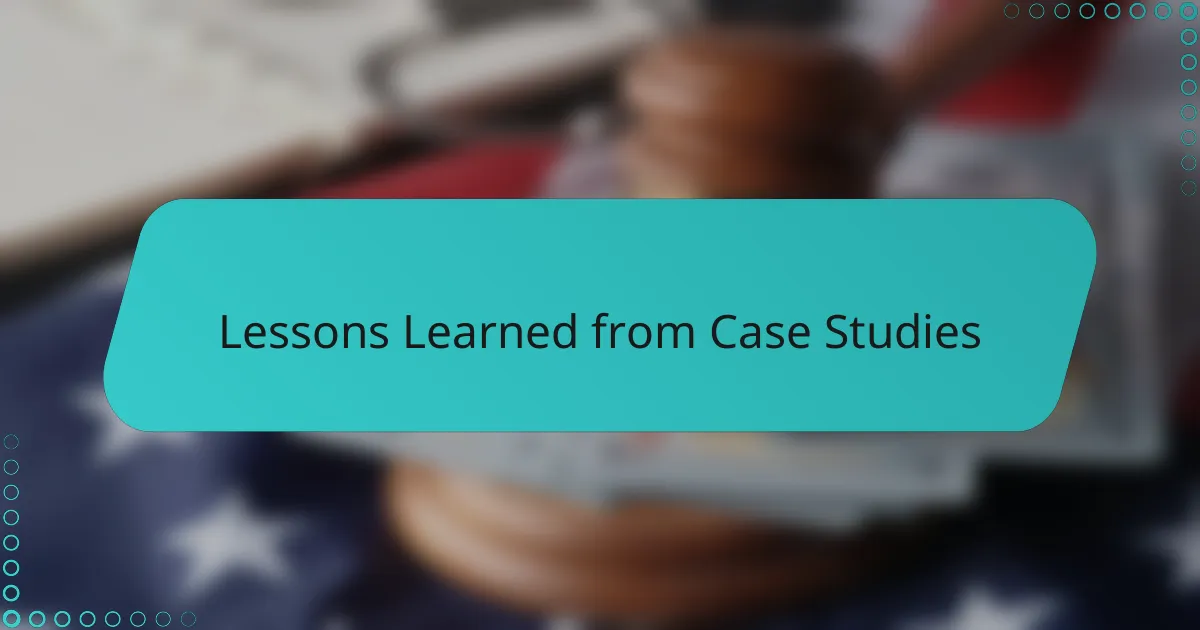
Lessons Learned from Case Studies
Looking back on various cases, I’ve noticed a recurring lesson: no injustice exists in isolation. Patterns emerge—whether it’s the way certain voices are marginalized or how evidence is consistently undervalued. Have you ever caught yourself seeing these patterns and wondered how they keep slipping through the cracks? Recognizing these connections helps me approach each case not just as an isolated event but as part of a bigger fight.
Another lesson hit me when I realized that the stories behind the facts often reveal what cold reports overlook. I remember a case where the timeline and official records pointed one way, but the personal context—captured through patient interviews—unveiled deeper truths. It made me ask myself, how often do we miss the human element amidst the legal technicalities? In my experience, these nuances can shift the entire trajectory of justice.
Finally, patience and persistence stand out as vital takeaways. There was a moment I almost gave up on collecting a seemingly minor piece of evidence, until it later became the keystone that held the case together. That taught me: no detail is too small, no effort wasted. How do you stay motivated when progress feels slow? For me, it’s knowing that each painstaking step moves us closer to fairness.
